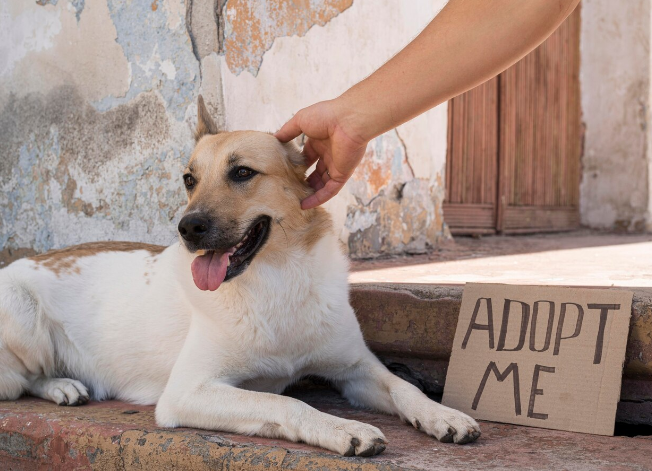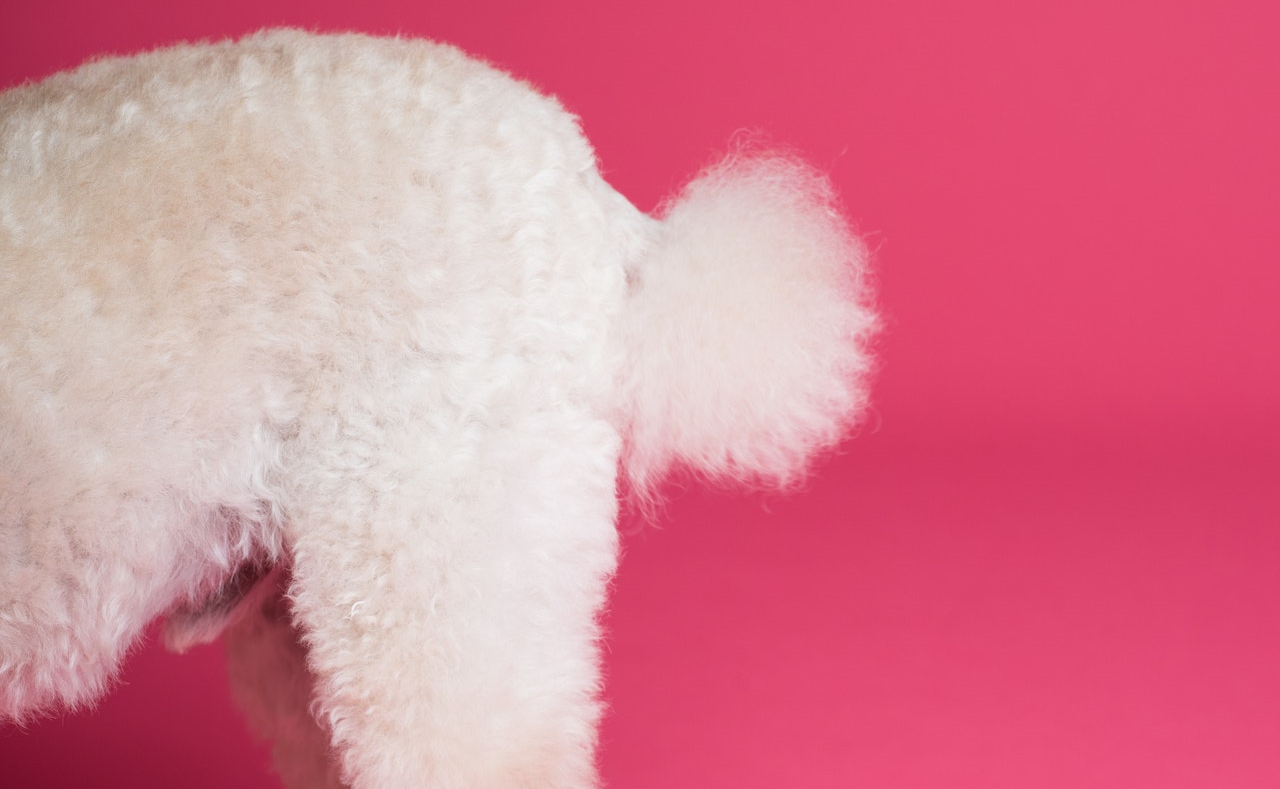- Why Should You Consider Crate Training Your Dog / Rescue Dog?
- When Is Crate Training Unsuitable For a Dog / Rescue Dog?
- What Should You Take Into Consideration Prior to Starting Crate Training a Rescue Dog?
- How to Properly Crate Train Your Rescue Dog?
- Important Tips to Remember When Crate Training a Rescue Dog
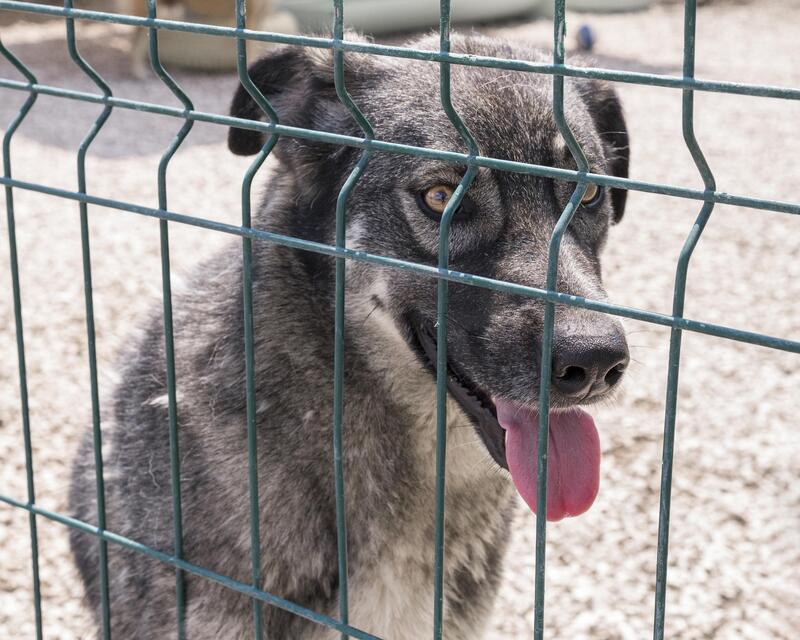
According to the statistics, more than 6 million dogs in the US end up in shelters every year. We can only imagine the number of canines in shelters worldwide…
Dogs in shelters are often considered an undesirable option for many individuals looking for a pet companion. Why is that? They are often even more intelligent, loyal, and loving than purebred dogs and also tend to be healthier. Purebred dogs purchased through a breeder are known for being more prone to genetic diseases due to recessive mutations.
Having said that, it is absolutely worth it to give a rescue paw friend a chance to start a new life and lead a happy life in their forever family.
Raising and training a rescue dog might have some specifics so to speak. Unlike dogs purchased through a breeder, rescues have often experienced traumatizing events. For instance, they are likely to have been poorly treated on the streets or suffer separation anxiety if they have been abandoned by their owners.
Given that, individuals who opt for a rescue dog should be very considerate and careful when crate training their paw friends.
When is crate training a good option for a rescue dog and when it is not; how to conduct it properly; how to help your canine develop a positive attitude towards crate training? These are some of the questions that we will discuss today.
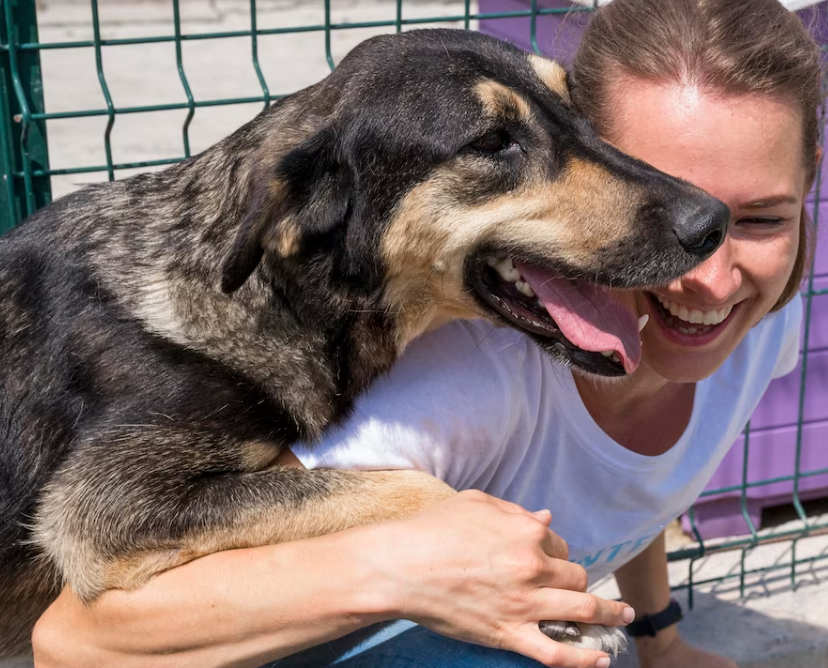
Why Should You Consider Crate Training Your Dog / Rescue Dog?
Being confined is not something anyone would enjoy... However, crate training is not a process of punishing the dog and putting them in a tiny space where they will be unhappy. No, it is the opposite!
The main idea of crate training is to provide the dog with their own “safe” space, where they can comfortably sleep, relax, and play. Considering the fact that dogs are creatures of habit, they do not enjoy any sudden changes in their environment. Having their personal space brings a feeling of safety in situations where changes in the environment have occurred. These changes might be related to the presence of unfamiliar guests, welcoming a baby or another pet, making rearrangements at home, or moving out of home.
Considering the nature of dogs, namely that they enjoy predictability, crate training helps establish a routine. They learn when it's time to eat, sleep, and play. This routine can help reduce anxiety and provide a sense of predictability, which can reduce destructive behaviors.
If you have a cute little destroyer at home, who enjoys chewing everything from their toys to your shoes and furniture, crate training might be very helpful! When conducted properly, crate training will help teach your canine to engage with their chew toys instead of your belongings.
Over time, your paw friend might be able to associate their crate with a relaxing time. Crate training can contribute to enhancing your furry friend’s self-control and discipline.
Crate training can also be very beneficial for house training. Dogs are not likely to relieve themselves in the area where they sleep and play, so the crate will help your paw friend do their business when outside on a walk.
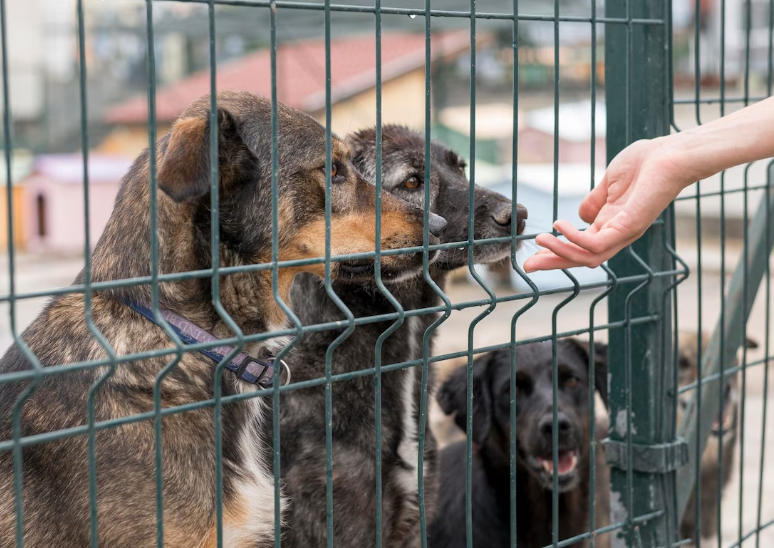
When Is Crate Training Unsuitable For a Dog / Rescue Dog?
Despite the advantages that crate training has for our paw friends’ overall well-being, it might also be unsuitable in some cases. It is essential to note that creating training itself does not replace behavioral training and addressing behavioral issues.
Severe Separation Anxiety
Behavioral issues like separation anxiety, especially when severe, should be addressed first through behavioral training, desensitization, and counter-conditioning before crate training is conducted. If you put your dog in a crate, this can worsen the issue and even cause them to tear up the crate and hurt themselves.
Try to leave your paw friend alone for a very short amount of time (a few minutes) by rewarding their calm behavior and increasing the time you are out of their sight step by step.
Another important thing to consider when addressing severe separation anxiety is the desensitization of the cues that your dog associates with your absence. The effect of all types of activities typical for you when you are about to go out, such as grabbing the keys, the phone, and putting shoes on, should be alleviated. Start doing these things randomly when at home and even reward your furry friend. That way they will stop associating them with you leaving, but will pair it with a positive experience.
Injuries / Health Conditions
If your paw friend is injured, physically impaired, or is dealing with a health issue, putting them in a crate is a no-go. Your beloved fellow may feel uncomfortable in a crate, which is why alternative options such as a puppy-proofed room or a playpen might be more suitable.
It is essential that you do not leave your dog unattended if they have a health issue. The crate is not a place to simply put your dog in and leave them alone while you are doing your business.
Reactivity / Fear-Based Aggression
If your canine has serious behavioral issues like aggression, especially when fear-based, you should address that problem first.
Proper socialization, recognizing the stimuli and avoiding or removing them from the surroundings, desensitization, and counter-conditioning, and focus training can be helpful tools to address reactivity. The following article may provide you with more detailed information in regard to this matter: Tips for Overcoming Leash Aggression in Reactive Dogs
Lack of Training
As explained above crate training does not replace basic obedience training and behavioral management. It is one of the tools to shape a dog’s behavior in the right direction and help them become well-mannered, happy, and confident adults.
If you do not conduct basic obedience while teaching your dog to use the crate, it is very likely that your canine will get frustrated and perceive the crate as a punishment. Always work on your dog’s fundamental skills and reinforce their good behavior by praising and rewarding them.
Age
While crate training can be a very helpful tool when training a young pup, it may not be the best option for a senior dog. Keep in mind that senior dogs are likely to suffer from various health conditions, causing balance issues, disorientation, joint issues, weakening their sight and hearing, etc. Based on your dog’s health, crate training may or may not be a good option.
Another important thing to keep in mind is that both pups and elderly dogs have problems holding their bladder for a long time. You should take your paw friend for regular walks even short ones for a potty break.
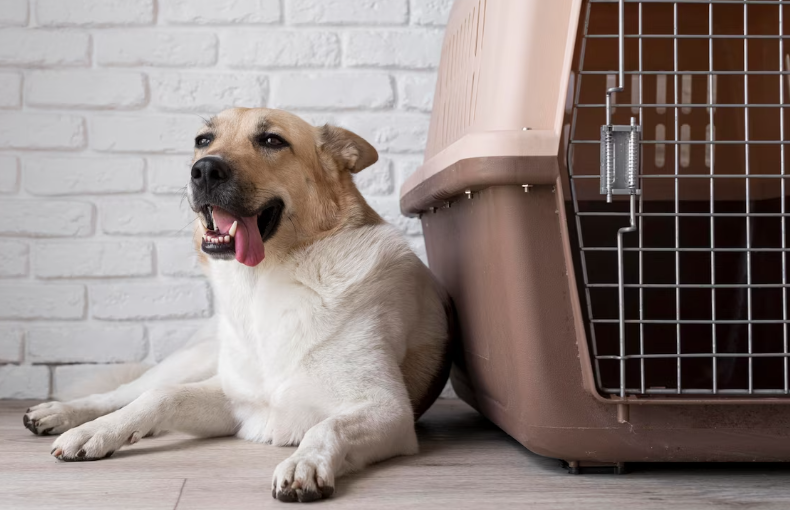
What Should You Take Into Consideration Prior to Starting Crate Training a Rescue Dog?
Simply put-their past. By “their past” we mean any information about the dog’s health and their experience in the shelter and before that. Any details about how the dog had been raised by the previous owners, prior to being put in a shelter, can be valuable for your understanding of how to properly care for your paw friend.
If there are any health conditions, behavioral issues, or traumatizing experiences in the dog’s past, you should be aware of them.
If you are missing important information about your furry friend, you are likely to face more difficulties along the way to raising and training them.
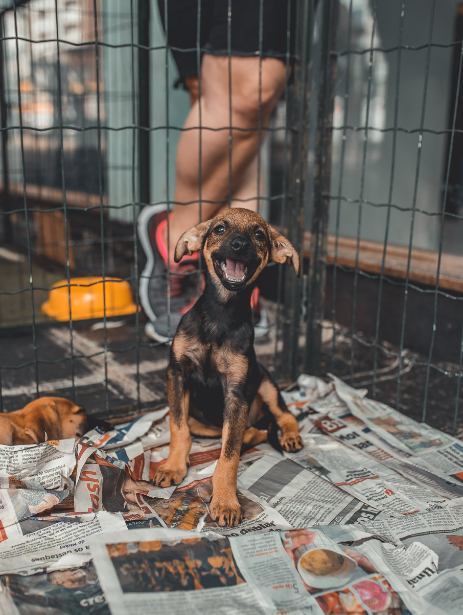
How to Properly Crate Train Your Rescue Dog?
Know Your Dog
The very first step is to know your dog. As mentioned above, their life prior to entering your home will give you valuable information about their health, temperament, and experiences.
The second step of the process of knowing your dog is to pay attention to their temperament, personality, body language, and responses to the environment. Be observant of any potential triggers and learn how to manage these.
Choose the Right Crate
The term “right crate” is related to the size, the material of the crate, and its purpose.
The crate shouldn’t be too small, so your paw friend has enough space to stand up and turn around and feel comfortable. Too large crates aren’t a good option either, as they may cause problems with house training. Unlike large crates, the smaller ones encourage dogs to hold their bladders and wait for the time to be taken on a walk. Also, the extra large crates do not create a feeling of safety and security, which is important to our paw family members.
In terms of material, there are generally three types of crate materials: wire, plastic, and wood.
Wire crates are well-ventilated and allow the dog to have a good view of the surroundings. They are also easy to clean, as in most cases, they come in foldable designs and their trays can be removed. However, they might not provide the same level of security or warmth as plastic crates.
Plastic Crates are more enclosed, providing a den-like feel that some dogs prefer. They are often used for travel. However, they may not be as well-ventilated or easy to clean as wire crates.
Wooden crates provide sturdiness and can fascinate with interesting designs that match the home decoration. Often they are hand-made, which makes them quite expensive. If you intend to fly with your dog, a wooden crate is likely to be accepted by the airline, so it can be a good option. However, it won’t be very practical to regularly put it in a car due to its weight.
You should think about the primary purpose of the crate-is it for house training, traveling or simply to ensure that your dog has their own safe space?
Consider what type of crate will be suitable in terms of durability, costs, cleaning, and weight, and will provide your dog with the best experience.
Make the Crate Comfortable
Keep in mind that your rescue paw friend is likely to have had a negative experience with the crate in the shelter, so it is essential that you make their new crate at home as comfortable as possible. Place some cozy items creating comfort and a feeling of safety, such as your old clothes having your scent on, plush toys, a warm blanket...etc.
These items can effectively replace expensive bedding. Also, if your paw friend has chewing issues, it would not be worth it to purchase bedding that will be torn apart very soon. Not to mention that this bad habit can cause serious health issues such as choking or intestinal blockage requiring immediate intervention.
Adding chew toys and other types of toys to keep your rescue friend engaged and redirect their attention from chewing, is highly recommended.
When it comes to important supplies like a food and water bowl, it is recommended that you place attachable bowls, so you prevent your paw friend from tipping them over and making the crate wet.
Choose a Suitable Location
The place where you will put the crate is as important as the crate itself. Don’t make your dog feel isolated from the household, nor put the crate in a very crowded place, where your canine may feel overwhelmed.
Find this perfect spot at home, which offers a good view of the surroundings and which will be neither too busy nor too secluded.
Since we are talking about rescue dogs, it is essential that you observe how your furry friend behaves. Are they looking for a place to hide, or they are rather overly affectionate and seeking attention? This will help you decide what the best spot is.
In the first case, you may need to put the crate in an area at home that offers more privacy, while in the second one, the place should be a busier part of the home. Do not go to extremes and give your rescue paw friend time to adapt to their new home.
A crucial thing to remember when choosing the spot to place the crate is to make sure that the furniture and any items around the crate won’t be damaged. Do not forget that your furry friend may experience unwanted behaviors in case they had a bad experience in the shelter or before that.
A negative response towards the crate and the surrounding area is very likely to occur, which is why you should take precautions.
Introduce the Crate by Pairing It With a Positive Experience
Your end goal is to help your rescue paw friend feel comfortable in the crate and associate it with a positive experience. What would be the best way to do that?
Food as a primary positive reinforcement, toys and praise as a secondary positive reinforcement tool, and gradual desensitization are key to success!
In the very beginning, you may need to reward and praise your dog even for showing interest in the crate, without getting inside. Observe your paw friend and make sure to reward them any time they sniff around the crate or gate closer to it. This will encourage their interest even more. Once they become more confident around the crate, try to lure them to get inside by putting delicious treats there.
The value of the treats should be considered “high” by your dog. In other words, the more anxious the dog is or generally speaking-the more difficult a task/behavior is, the higher the reward’s value should be. The value should be decreased over time as the dog will get more used to the task/behavior.
Having said that, you may need to start with pieces of chicken, liver, turkey, beef, and string cheese and gradually transition to kibble / their regular food as a reward.
High-value treats are given during the training sessions only and are not incorporated into the regular diet of the dog.
Talking to your paw friend with a calm and reassuring voice, to make them feel safe and comfortable is another important thing to keep in mind.
An important step of the process you should remember is to reward your paw friend when treats only when they are inside the crate. Over time, this will lead to pairing the crate with receiving a reward.
Start Closing the Door
Once you notice that your rescue is feeling comfortable inside the crate and getting there on their own, you should start closing the door.
Remember to leave the door closed for a very short amount of time in the beginning (15–20 seconds). Keep a short distance to the crate, so that you are inside your dog’s sight. This will serve as a sign of reassurance, that you won’t abandon them and will bring a feeling of safety.
After 15–20 seconds you should open the door and encourage your canine to get out. Of course, if they are totally engaged in chewing the treats or playing with the toys that you placed there, then you might want to consider extending this period by 10–20 seconds or even longer.
If the training is not going at the pace you would like to and your dog gets extremely frustrated being in the crate, you should try to comfort them by talking to them nicely and softly. If this does not help, you should open the door and encourage them to get out.
Do not be afraid to slow down a bit when needed and take a step back. Continue working on introducing the crate and helping your paw friend develop a positive attitude towards it. Invite them in the crate gradually without forcing them in if they are not ready for this step.
Increase the Duration of the Time Your Dog Spends in the Crate
If your rescue canine responds well to being in the crate, you can start gradually increasing the duration of the time they spend inside. Let them enjoy their treats, toys, and a private area for relaxation that the crate provides.
Make sure to be around, and never forget to praise and pet your dog when they go out of the crate. Even if it may take a bit longer to accomplish this, be confident that with patience and persistence, you and your rescue paw friend can go a long way together!
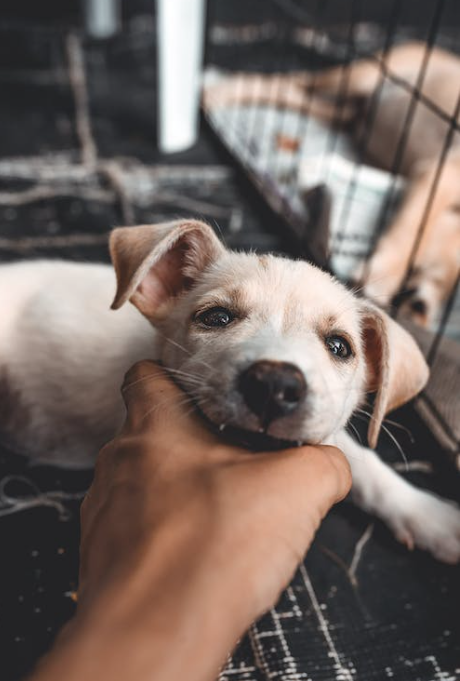
Important Tips to Remember When Crate Training a Rescue Dog
Never Use the Crate as a Punishment
This is absolutely essential to remember! The crate is the safe zone for your dog, so if you want crate training to succeed, make sure that it is associated only with a positive experience.
If your dog misbehaves, try to ignore them, or redirect their attention and reward them when they show the wanted behavior. Encourage your canine to exhibit the desired behaviors instead of punishing them, especially by putting them in a confined space.
Physical and Mental Stimulation
A dog who has spent enough time of the day playing, exercising, training, and socializing will be tired and more willing to go in the crate on their own and spend some quiet time there resting and relaxing. This is why it is important that you keep your rescue physically active and mentally stimulated, so they will be glad to go rest in the crate.
A dog who does not have the opportunity to spend their energy throughout the day is not likely to spend time in an enclosed space.
Remove the Collar And the Leash
Never forget to remove any training or identification gear you may put on your paw friend before encouraging them to go into the crate. Otherwise, there is a chance for them to get stuck between the wires or the wooden pallets which can cause serious injuries to the dog.
Turn Crate Training into a Part of the Routine
Make sure that crate has become a part of your dog’s daily routine and not something extraordinary, that happens occasionally. You will create predictability which in turn will bring a feeling of safety to your paw friend. Our beloved paw friends enjoy having a routine and sense of safety that accompanies it.
Furthermore, sticking to a schedule improves self-control and discipline. Learning that they will have their needs met at a certain time of the day, will make your paw companion more patient. They will become willing to wait for the time to get out for a walk, potty break, or meal instead of misbehaving in the crate out of fear that they will be abandoned, or won’t have their basic needs met.
Keep Things Simple and Low-Key
You may wonder what we mean by “simple and unpretentious”... In the context of crate training a rescue dog and dog training in general, we mean to act naturally. Do not make a big deal of letting your furry friend out of the crate, especially after a whole night spent there. Show them this is a standard part of their schedule.
Talk to them softly and kindly avoiding being overly enthusiastic. After a night in the crate, open the crate’s door and gently put the training gear on them, taking them out for a walk.
Of course, if your dog is in a hurry to do their business, you may need to act quickly and take them out in a timely fashion to avoid accidents.
Start Rewarding Your Dog On a Random Basis
As explained above, the rewards should be of a high value in the beginning, and gradually transition into treats of a mid- and low-value. At some point, when your dog is quite well accustomed to the crate, you should start giving treats on a random basis.
Use the Crate Reasonably
Simply put-you should not overdo crate training. Its purpose is to provide a safe space for a relaxing and positive experience and not a place where your paw friend will spend all day long while you are away. Even if your furry friend accepts the crate pretty well, remember that it should be used reasonably.
Lack of physical and mental stimulation, as well as insufficient engagement of the owner, lead to undesired behaviors. Try finding time to spend with your rescue and make them feel loved and cared for in their forever home.


